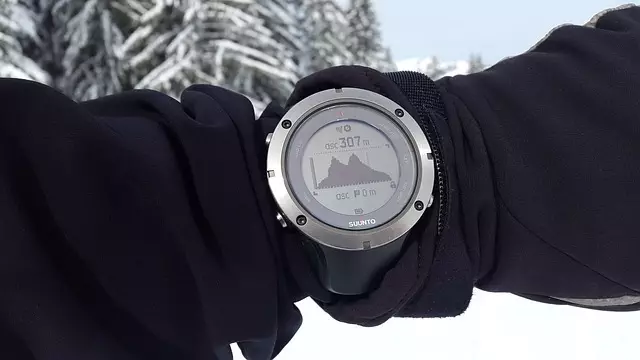Touchscreen GPS navigation systems have become standard in modern vehicles for safety and comfort. While DIY installation offers customization, professional installation in Toledo provides precision, warranty support, and expert technicians. Professional services leverage specialized knowledge, ensuring optimal performance and longevity of your GPS device. Before installing, gather essential tools and prepare a clean workspace. Consider professional assistance for proper integration, excellent performance, and warranty support. After installation, conduct rigorous checks and regular maintenance for optimal functionality.
Looking to enhance your vehicle’s navigation with a touchscreen GPS? This comprehensive guide covers everything from understanding advanced GPS systems to expert installation tips. We explore the benefits of professional versus DIY installation and provide a detailed step-by-step process for fitting one in your car. Discover essential preparation steps, including tools and requirements, along with post-installation checks and maintenance advice. Whether you opt for professional help or take the DIY route, ensure optimal performance with our expert insights tailored for the Toledo market.
- Understanding Touchscreen GPS Navigation Systems
- Benefits of Professional Installation vs DIY
- Preparation for Installation: Tools and Requirements
- Step-by-Step Guide to Installing a Touchscreen GPS
- Post-Installation Checks and Maintenance Tips
Understanding Touchscreen GPS Navigation Systems
Touchscreen GPS navigation systems have become ubiquitous in modern vehicles, offering drivers a user-friendly and efficient way to navigate their surroundings. These systems integrate seamlessly with the car’s dashboard, providing real-time directions, traffic updates, and various mapping functionalities. For those considering installing a touchscreen GPS in their vehicle, understanding both the benefits and the process is key.
In Toledo or any other city, DIY gps installation is a popular choice for tech-savvy individuals looking to customize their vehicles. It allows for more control over the system’s features and placement. However, professional gps installation remains a preferred option for many due to its precision, warranty support, and the expertise offered by specialized technicians. Regardless of the approach, having a reliable GPS navigation system enhances driving safety and comfort, making it an increasingly popular upgrade choice.
Benefits of Professional Installation vs DIY
Professional GPS installation offers numerous advantages over DIY approaches for several reasons. Expert installers possess specialized knowledge and experience in integrating GPS navigation systems seamlessly into vehicles. They utilize advanced tools and techniques, ensuring precise and secure fitting that aligns with manufacturer standards. This expert touch guarantees optimal performance, functionality, and longevity of your GPS device.
While DIY installations can be cost-effective, they often compromise quality and safety. Improper installation may lead to faulty operation, power issues, or even voiding warranties. Professional installers prioritize detail-oriented work, thorough testing, and calibration, delivering a reliable and user-friendly experience. For instance, in Toledo, professional GPS navigation system installation services cater to diverse vehicle types, providing peace of mind and enhanced driving efficiency.
Preparation for Installation: Tools and Requirements
Before tackling the installation process, it’s crucial to prepare and gather all necessary tools and requirements. For a successful DIY GPS navigation system installation in your Toledo vehicle, you’ll need basic automotive tools like screwdrivers, wire strippers, and a harness adapter compatible with your car’s make and model. Ensure you work on a clean, flat surface and have adequate lighting to avoid any mishaps.
Additionally, consider having a partner assist to double-check connections and provide extra hands when needed. Professional GPS installation services offer peace of mind, especially for those unfamiliar with automotive electrical systems. They also ensure proper integration, optimal performance, and warranty coverage.
Step-by-Step Guide to Installing a Touchscreen GPS
Installing a touchscreen GPS can be a straightforward process, whether you opt for a DIY approach or seek professional help. Here’s a step-by-step guide tailored to the specific needs of a GPS navigation system installation in Toledo, catering to both methods.
For a do-it-yourself (DIY) installation, start by choosing a compatible touchscreen GPS device designed for vehicle integration. Ensure it fits your car’s dashboard or desired location. Next, gather necessary tools like wiring connectors, adhesive, and mounting brackets specific to your vehicle model. Turn off the engine and locate the appropriate wire harness within your vehicle. Connect the GPS device’s power cable to this harness, ensuring proper polarity. Securely mount the touchscreen using provided hardware, then run the necessary cables through the dashboard or desired path, hiding them for a clean finish. Complete the setup by powering on the GPS, configuring initial settings, and downloading your preferred maps. For a professional installation, consult a local automotive expert specializing in GPS navigation system installation. They will handle every step, from selecting the right equipment to ensuring optimal performance and aesthetics.
Post-Installation Checks and Maintenance Tips
After successfully installing a GPS navigation system in your Toledo vehicle, it’s crucial to conduct thorough post-installation checks. Start by ensuring all components are securely fastened and connected, verifying proper signal reception, and testing the accuracy of route guidance. Check for any display glitches or unusual behaviors, addressing them promptly to avoid future issues. Additionally, test the system’s sensitivity to different touch inputs, making sure it responds accurately to your finger’s movements.
Regular maintenance is vital for keeping your GPS navigation system in optimal condition. Keep the unit clean, removing any dust or debris that might interfere with its functionality. Regularly update the mapping software and GPS data to benefit from improved route planning and location accuracy. As with any technological device, periodic power cycles can help prevent potential glitches. Moreover, staying informed about firmware updates ensures your system remains secure and performs at its best, enhancing your overall driving experience.


